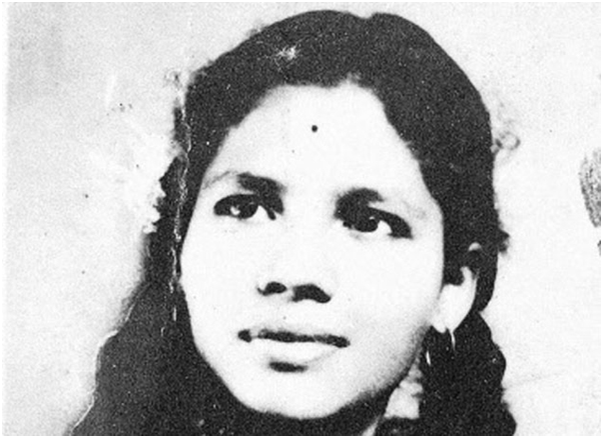Asmita Remembers Aruna: A Life Snuffed Out
Aruna Shanbug went into a coma for over four decades after being raped. Her rapist got seven years!!

Last night I sat at Stein Auditorium at India Habitat Centre, and watched a play called Aruna's Story. It's title was simple, too too simple.
Before we all forget the facts, let me recount the story. Aruna was a sprightly young girl from rural Karnataka who dreamt of coming to Mumbai, joining a big hospital and becoming the top nurse. Rejecting her family's plans to find her a nice Brahmin boy, she arrives in the maximum city, writes her entrance exam and joins KEM hospital as junior nurse. Soon her mind and manner propels her rise to position of staff nurse. Among her duties is supervision of the dog lab in the vet section. Here she finds the kennel keeper Sohanlal Valmiki misbehaving and stealing dog food. So she upbraids him and threatens action. Anger, hate, revenge, the boy froths with rage. The play opens with his revenge. We witness enactment of Aruna's rape.
We see an erect male figure, back to the audience. In both its hands are two chains, dog chains. It stands still for a few minutes, then begin the sounds; curses, yowls, rage, sadism, depravity... All played to the lashing of chains. In between its guttural sounds there are pleading screams in a female voice. We watch with horror, which wants to, at once, shut out, and yet... witness every detail of the heinous act. Then in semi darkness the male slouches off. The deed is done.
Aruna was raped and killed (but not quite) in 1973. She lived in vegetative state for 42 years and died 'of natural causes' in April 2015. At the time of rape she was 25 years old.
The play lasts for one hour and ten minutes. The grim beginning yields to lighter moments. We see Aruna in Haldipur, Karnataka cajoling her mother to let her go to chase her dream. Her life in Mumbai is revealed through letters to Amma. We see her at Chowpatty singing in her Kannada-Hindi tone her favorite film songs. We learn of her shine for Dr Sardesai especially after she sees her idol Meena Kumari-Raj Kumar- nurse-doctor-romance in the classic film Dil Apna aur Preet Parai.
We never see her post rape; after she ceases to be alive, although she is clinically still living. We learn of her through other characters, the matron, the nurses, the chowkidars, the police, the bureaucrats, the patients, the doctors. We learn of her through Dr Sardesai the doctor who she was to marry. We learn that her assailant was tried for robbery and attempt to murder and sentenced for seven years. Seven years sentence for a life he extinguished with heinous depravity. Why this pathetic quantum of punishment? The reason is simple Milord. No complainant, you understand, NO COMPLAINANT... AND THE VICTIM LIVES. Yes Aruna's vital signs are OK!
Aruna, lightning, quicksilver, played by a woman called Lushin Dubey who performs 18 roles in the play. She is the rapist, she is Aruna. She is Amma, she is Nimma. She sticks a cap on her head and is the policeman who refuses to use the rape section because the case is 'weak'. Especially since the doctor's report said 'hymen not broken'. Who cares if the girl was penetrated the other way, tearing her rectum. She is also the intrepid journalist at the typewriter clanging out the sordid saga for the world to witness. She is the voice of us all when as the Matron she says ' Why do we always have to be on guard and not speak our mind just because we are women... When will they make the workplace secure for us?'
If a man had reprimanded a worker for wrong doing would he have been thus brutalized, that is the question. The woman is punished for speaking her mind, doing her duty, dressing her way; anything which goes against the patriarchal norm. Aruna's case is taken up by Mumbai based writer and journalist Pinki Virani who files a plea for passive euthanasia. The landmark judgment finally allows passive euthanasia and if the raped woman is left in a vegetative state the rapist is to be tried as murderer.
The play rudely interrupts our daily life, with the story of Aruna, opening layer after layer, her short life span. Lushin flips on the policeman's hat, wraps the nurse's white sari, draws on her nose spectacles of Matron, pulls on red print skirt of the girl, wears doctor's white coat, sliding easily into the flesh of all who touched Aruna's life.
At the end of the play, Lushin spoke a few words to a standing ovation introducing the director Arvind Gaur. We have been watching with growing respect, for two decades, his theatre group, Asmita which is known for its social commitment.
Aruna, Damyanti, Nirbhaya, how many women will it take? One hell of a fine actor, Lushin, by taking up Aruna's Story has asked this question to the universal patriarchy which stretches across the entire globe.



